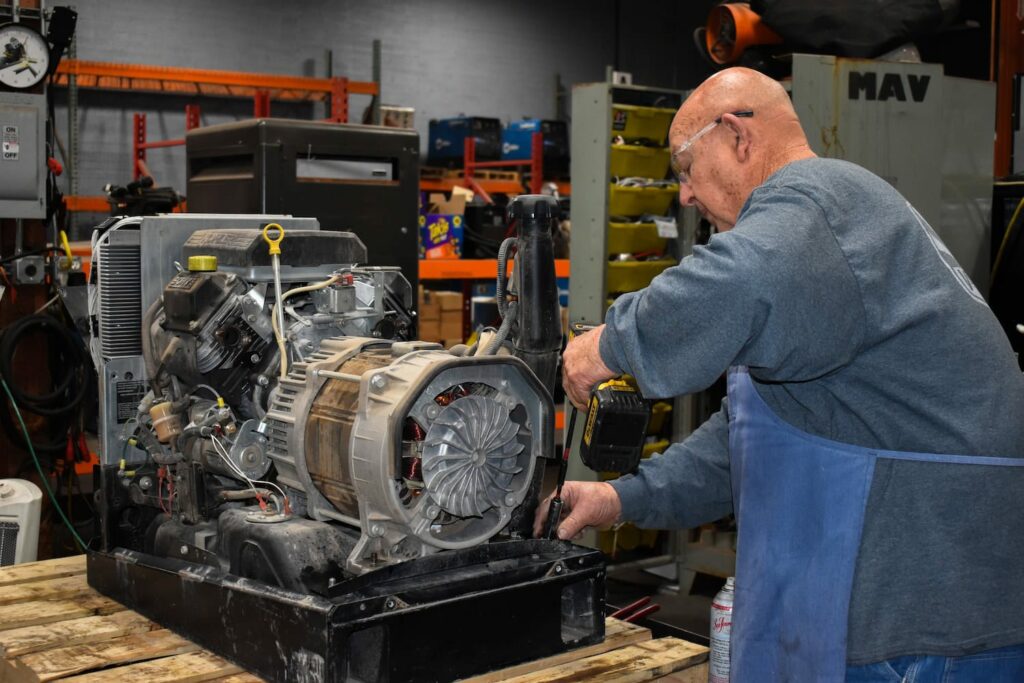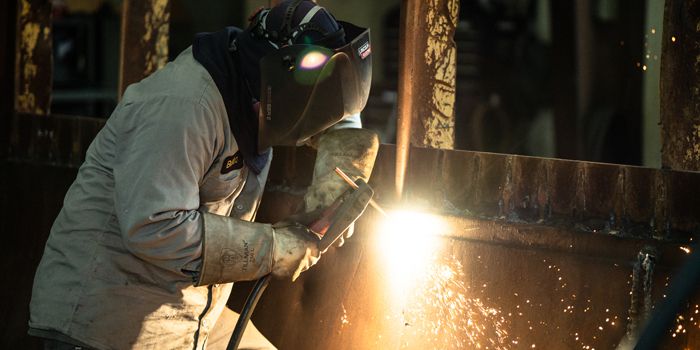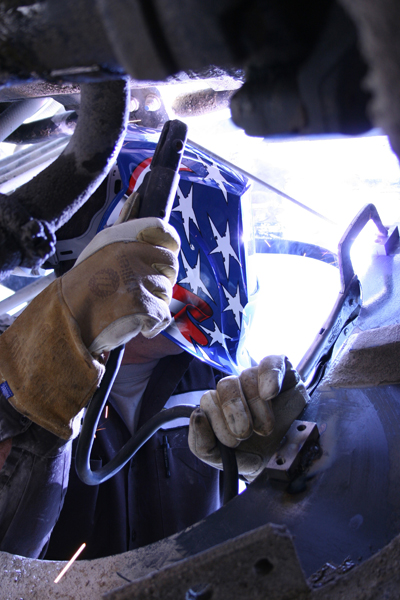Common Welding Fixing Issues and Just How to Address Them Efficiently
Welding repairs often experience a variety of issues that can jeopardize the integrity of the end product. Typical problems consist of insufficient penetration, porosity, and imbalance, to name a few. Each problem presents unique difficulties that require specific approaches for resolution. Understanding these concerns is necessary for welders aiming to boost their abilities and outcomes. This discussion will discover these usual welding repair work concerns and reliable approaches to address them.
Inadequate Infiltration
Insufficient penetration occurs when the weld metal fails to totally fuse with the base material, causing weak joints and possible structural failings. This issue typically stems from not enough heat input, wrong electrode angle, or incorrect welding speed. Welders might come across inadequate infiltration as a result of a mistake of the necessary specifications for a specific product density or kind. Furthermore, contamination on the base material's surface can hinder reliable bonding, worsening the trouble. To attend to inadequate infiltration, welders must guarantee proper settings on their devices and keep a tidy work surface. Routine inspection of welds is advised to determine any type of deficiencies early, enabling for prompt adjustments and the prevention of endangered architectural stability in bonded assemblies.
Porosity
Porosity is a typical issue in bonded joints that manifests as tiny gas bubbles trapped within the weld steel. This problem can compromise the honesty of the weld, causing lowered strength and possible failing under tension. Belgrade Welding. Porosity typically arises from contamination, wetness, or improper welding strategies, which allow gases to escape into the molten weld swimming pool. To deal with porosity, welders need to guarantee correct surface prep work, keep a tidy functioning setting, and use suitable welding parameters. In addition, selecting the appropriate filler material and protecting gas can minimize gas entrapment. Regular examination and testing of welds can assist identify porosity early, guaranteeing timely rehabilitative activities are taken, thereby preserving the high quality and dependability of the bonded framework
Imbalance
Misalignment in welding can emerge from numerous aspects, including improper arrangement and thermal growth. Understanding the source is vital for reliable resolution. Several improvement strategies are available to straighten components and ensure architectural stability.
Sources of Imbalance
Welding misalignment commonly originates from a selection of underlying problems that can compromise structural integrity. One key reason is inappropriate fit-up of parts before welding, which can lead to spaces and irregular surfaces. Variations in thermal growth throughout the welding procedure can additionally cause distortion, especially if the products being signed up with have various coefficients of growth. In addition, inadequate fixturing and securing might stop working to hold parts securely in position, leading to motion throughout welding. Badly maintained devices, including welding devices and devices, might present inconsistencies in the weld bead, more contributing to misalignment. Operator mistake, stemming from insufficient training or experience, can also play a considerable function in creating misaligned welds.

Modification Techniques Offered
Dealing with misalignment properly needs a mix of corrective methods tailored to the details concerns available. One common method is using jigs or fixtures to hold parts in the right setting throughout welding, ensuring constant alignment. Additionally, pre-heating the materials can help in reducing distortion and improve fit-up. For considerable imbalance, mechanical adjustment methods, such as making use of hydraulic jacks or clamps, can be used to fix the placement before welding. Post-weld warm therapy might additionally be needed to ease tensions brought on by imbalance. Finally, careful inspection and adjustment throughout the configuration phase can protect against imbalance issues from ending up being significant issues, advertising a smoother welding process and improving total structural honesty.
Distortion
Distortion is an usual difficulty in welding that can arise from various elements, consisting of irregular heating and air conditioning. Recognizing the root causes of distortion is necessary for executing reliable prevention methods. Addressing this problem not only improves architectural integrity however additionally boosts the general high quality of the weld.
Root causes of Distortion
When based on the intense heat of welding, products typically go through changes that can result in distortion. This phenomenon largely occurs from thermal growth and contraction during the welding process. As the weld location warms up, the material expands; upon cooling, it gets, which can develop interior tensions. On top of that, uneven heating across a work surface can worsen these stresses, causing bending or flexing. The sort of product likewise plays a significant duty; metals with differing thermal conductivity and coefficients of growth may react in different ways, resulting in unforeseeable distortions. Inadequate joint layout and poor fixturing can add to imbalance during welding, increasing the likelihood of distortion. Recognizing these causes is essential for efficient welding repair and prevention methods.
Prevention Techniques
Efficient avoidance methods for distortion throughout welding concentrate on regulating warm input and ensuring appropriate joint design. Keeping a consistent heat input aids to lessen thermal development and contraction, which can bring about distortion. Using techniques such as preheating the work surface can likewise lower the temperature level slope, promoting uniform heating. In addition, picking proper joint designs, such as T-joints or lap joints, can boost security and decrease anxiety concentrations. Carrying out proper fixturing to safeguard the work surfaces in place better help in maintaining positioning throughout the welding procedure. Ultimately, staggered welding sequences can distribute warm more evenly, preventing localized distortion. By applying these methods, welders can substantially decrease the probability of distortion and boost the total quality of their welds.
Splitting
Splitting is a typical concern experienced in welding repair work, usually arising from different factors such as improper cooling rates, product selection, or inadequate joint prep work. The occurrence of splits can significantly endanger the honesty of the weld, resulting in possible failures throughout procedure. To resolve this issue, welders must initially examine the origin causes, ensuring that materials work and properly chosen for the details application. Furthermore, controlling the cooling price throughout the welding process is necessary; rapid air conditioning can generate stress and result in cracking. Correct joint layout and prep work also add to decreasing the danger. Applying these approaches can enhance weld high quality and durability, ultimately minimizing the likelihood of fracturing in finished weldments.

Incomplete Blend
A considerable problem in welding repair services is insufficient blend, which takes place when the weld metal does not properly bond with the base product or previous weld passes - Montana Mobile Welding and Repair. This issue can cause weaknesses in the joint, possibly endangering the integrity of the welded framework. Elements adding to incomplete blend consist of not enough warmth input, incorrect welding method, and contamination of the surface areas being joined. To address this problem properly, welders must assure proper pre-weld cleaning and surface preparation, in addition to readjust their welding criteria to accomplish ample infiltration and combination. Routine inspection throughout the welding procedure can likewise assist determine incomplete blend early, enabling timely corrective actions to improve the total quality of the weld
Overheating
While welding fixings can improve structural integrity, overheating presents a substantial difficulty that can bring about material degradation. Excessive warm during welding can modify the mechanical homes of steels, leading to decreased strength, Belgrade Welding enhanced brittleness, and warping. This phenomenon is particularly crucial in high-stress applications where structural reliability is vital. Determining getting too hot can involve aesthetic examinations for discoloration or distortion, as well as keeping track of temperature level during the welding procedure. To minimize the risks connected with overheating, welders need to use ideal strategies, such as managing warm input, changing traveling speed, and making use of appropriate filler materials. Additionally, applying pre- and post-weld heat therapies can help recover product homes and enhance the total high quality of the repair, guaranteeing long-lasting efficiency and safety and security.
Often Asked Questions
What Are the Usual Indicators of a Welding Defect?

Exactly How Can I Test My Welds for Quality?
To test welds for top quality, one can utilize aesthetic examinations, ultrasonic screening, and radiographic techniques. Each method ensures structural honesty, determines problems, and confirms adherence to specified standards, eventually boosting the reliability of the welded joints.
What Safety and security Safety Measures Should I Take While Welding?
When welding, one should focus on safety by using ideal individual safety equipment, making certain appropriate air flow, securing combustible materials away, preserving a tidy workspace, and recognizing surroundings to avoid injuries and crashes.
Can I Repair a Weld Without Redoing the Entire Joint?
Repairing a weld without redoing the whole joint is possible, depending on the damages (Welding). Strategies such as grinding, including filler product, or utilizing a welding procedure can efficiently deal with particular imperfections while preserving the surrounding structure
What Equipment Are Vital for Effective Welding Repairs?
Important tools for effective welding repair work include a welding maker, cable brush, mill, safety equipment, clamps, and filler materials. Each device plays a crucial function in making sure quality and safety throughout the fixing procedure. Porosity generally arises from contamination, moisture, or inappropriate welding techniques, which permit gases to get away into the molten weld pool. Inadequately maintained equipment, including welding devices and tools, may introduce incongruities in the weld grain, further contributing to misalignment. When subjected to the intense warm of welding, products usually go through adjustments that can lead to distortion. Cracking is an usual issue experienced in welding repair work, typically resulting from different factors such as inappropriate cooling rates, material selection, or inadequate joint prep work. A considerable issue in welding fixings is incomplete fusion, which happens when the weld steel does not properly bond with the base material or previous weld passes.
Comments on “Expert welding repair tips from Belgrade Welding professionals”